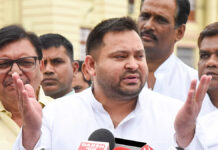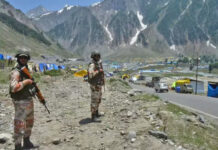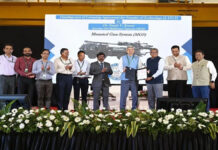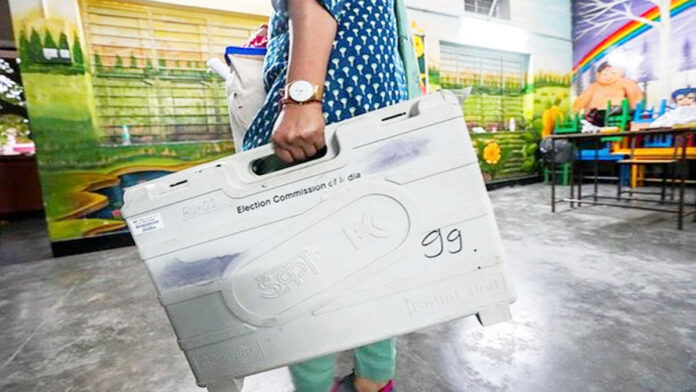NEW DELHI, June 4
Cupped chin and distracted from routine business meetings, many business leaders were either glued on to television or peering into their mobile phone tracking the trends in ballot counting. While many, did not wish to be to named, they did see reason for both concern and hope. The concerns, especially high among those dependent on government project and hopes largely from a blindingly clear message that there is need to recalibrate the policy priorities on economy with the emphasis largely on measures to create jobs, spur rural demand and address the challenge of income inequality.
LOK SABHA ELECTION RESULTS 2024
“This election has shocked everybody banking on the exit polls and one major reason could be that the rising aspirations of the people, particularly the young and those adding to the workforce every year, has not been met and they are sending a message,” says T V Mohandas Pai, philanthropist, co-founder of Aarin Capital and the former member on the board of the IT major Infosys.
To him, “the government that comes to power, which looks like the NDA, has to focus on job creation with better wages.
In the last five years there has been job creation if you look at the EPFO (Employment Provident Fund Organisation) data but rural job creation and rural incomes have stagnated.”
The employment data from EPFO, he says, “shows that 80 per cent of the jobs are less than Rs 20,000 a month and people want to get higher income and that is the problem that has to be solved. This problem can be solved by incentivising labour-intensive industries to create one crore jobs in the rural areas.”
GST probe wing set to widen scrutiny of pharma companies
There is also a second issue that he sees emerging and this, he says, relates to the fact that in the large parts of the country, including in the rural areas, where 60 per cent of people reside, while most basic necessities of life have been provided by the Modi government in terms of housing, power, water, toilet, gas stove and bank account, “they still need the money to spend and invest.
The much-touted opposition mantra of giving Rs 1 lakh to women has obviously had an impact.” Reminding that we still need to look at the numbers and see the extent to which women have voted on the basis of this to the opposition, a clear takeaway for the policy makers now is that this needs to be directly tackled and one way to do it is to look “at the 40 crore families in the country, of this, pick up 25 per cent or 10 crore families and to the woman in such households, transfer Rs 2,000 a month to their bank accounts. This will amount to Rs 2,42,000 crore a year, which can easily be financed this year from the huge dividend that the government has received from the Reserve Bank of India and from the dividends from the public sector undertaking, tax revenues and through disinvestment programme.”
This, he feels, will help solve an immediate problem “and create a virtuous cycle of consumer spending in the rural areas and also tackle the challenge of income generation and economic activity in the rural sector.”
And, for the infrastructure sector, which he feels, also needs a push, “the spending should be increased but the funds have to come from the sale of the road assets that have been created.” To him, India needs continuous infrastructure spending for the next ten years.
Like Pai, many within the corporate India, feel that people’s aspirations have gone up tremendously and for that they need jobs with better income and at a faster pace. Added to this, there are huge numbers because we are going through a youth-bulge. “The largest number of people, ever in history, are now joining the workforce this decade and next. Go back 20 years, 2.5 crore people were born every year and they are all coming into the workforce but many are not able to find high-paying jobs and are getting less than Rs 20,000 a month,” says Pai.
Speaking from London, Dr Arvind Lal, executive chairman, Dr Lal PathLabs, says, “the corporate India would like to have a stable government at the Centre and from the healthcare sector, sincerely hope that which ever party comes to power, looks like the NDA, going by the ballot count trends at the moment, will aim towards spending 2.5 per cent of the GDP on healthcare and within this, especially on primary health.”
He feels, “it is time healthcare is given the similar benefits to sectors like semiconductors, for instance.” He also adds that “at a broader level, there is a clear need to confront the challenge of unemployment as it will be now or never.”
Continued focus on infrastructure, crucial
To Naushad Forbes, Co-chairman, Forbes Marshall, the message from the poll results is clear: “We have a very wise electorate and one that does not like to polarise and divide and wants continued development for the country as a whole.” Forbes, who wears a hat frothing with many feathers, including that of the former president of the Confederation of Indian Industry (CII) and that of the author of a popular book, “The Struggle and the promise: Restoring India’s potential.” He hopes there will be continuity in terms of the thrust on infrastructure with more attention being paid to employment- intensive sectors, much greater focus on primary and secondary education.”



























